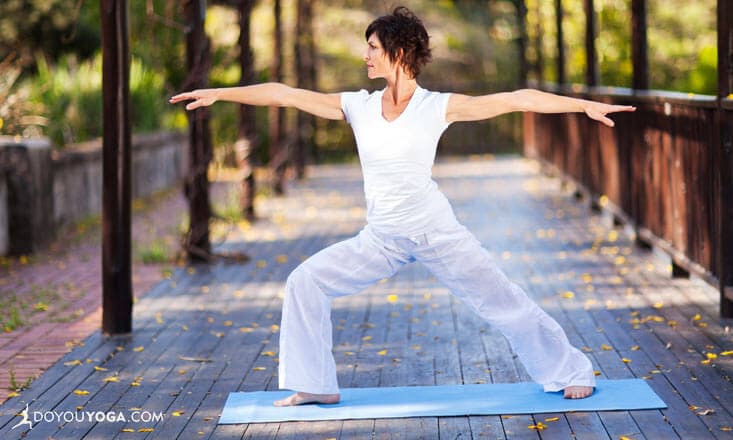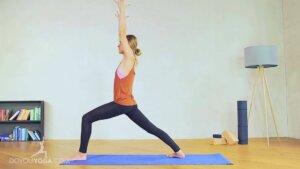I wonder — if letting go is so profound, why don’t we do it more easily?
The short answer is, it hurts! It’s painful — really painful — in a number of ways.
Holding On as a Habit
The first is the emotional familiarity, analogous to physical pain. If you’ve held your body, even just your hand, in any position for a sustained amount of time, changing that position hurts. Even if it’s no longer comfortable, coming out of it can feel worse. (Anyone who has done sitting mediation can testify to the excruciating pins-and-needles that are par for the course.) And we tend to grip fast to things we like, even after they may have vanished.
That clenched grasp becomes a habit, and eventually the bones will grow into that shape the way a tree can envelop an iron railing.
And this is how letting go works emotionally: we’re so accustomed, so connected to this object — be it a thought form or physical entity — that moving in any way sends shock waves through the emotional body and the alarm is raised: no, no, no!
Overcoming Resistance
To overcome this reflexive resistance involves another challenge — the “better thing” that motivates us to seek change in the first place. How often have we released our grip on one thing, only to immediately clasp even more firmly to the next? This provides a little relief and the illusion of progress, but we haven’t really let go; we’ve just swapped one trapeze bar for another.
The moment of release was so brief as to be inconsequential, even if it was exhilarating and terrifying for an instant.
Letting go, real letting go rather than a “look mom, no hands!” flirtation with disaster, is one of the most painful and scary things we can do, especially if our reason for doing so is vague and unfamiliar. “Being happy” is pretty abstract compared to the very real pain of release.
Focusing on any one thing is dubious. The results are unpredictable, and wouldn’t we rather be open to unfolding, rather than dictating to the universe? It requires faith and trust, in ourselves and the cosmos, and especially courage.
Luckily, these are qualities that we can practice in the safe space of our mats. All three Warrior poses develop our bravery, strength, endurance, self-confidence, balance, openness, and thus our ability to honestly let go.
Warrior I
Warrior I is powerfully releasing, both physically and metaphysically. In this pose we’re activating our major lymph nodes (around the armpits and the groin), which stimulates the processing and expulsion of all the waste in our bloodstream. (Unlike our circulatory system, the lymphatic doesn’t have a pump, and relies upon muscular contraction to clear the lymph fluid through our bodies and out.)
As we ground our feet and lift our hands, we’re like antennae between heaven and earth, drawing in light from the cosmos and offering the weight of gravity up and away. The light backbend opens our hearts to this new moment, cleansing our entire body.
Warrior II
 Credit: Kristin McGee
Credit: Kristin McGeeIn Warrior II we build stamina, strength, and openness, while still stimulating the lymphatic processes. We also develop our ability to stretch in four directions at once – left, right, up, and down.
The unwavering gaze builds focus, confidence and determination, while we stay strong, refusing to collapse, yet softening our shoulders and hearts even at a moment of maximum pressure.
Warrior III
Warrior III does it all – balance, strength, concentration, effort, and within all of these qualities the underlying potential of perfect stillness, our only movement the breath. We might be surprised to discover that as we raise our floating foot, the balance improves, illustrating so elegantly how effort creates lightness; our standing leg is a fulcrum over which our past and future balance in symmetry.
This moment, now, is all we can grasp — the second we wander away from this, we fall. And perhaps here is the lesson for all of us trying to release what we no longer need, without the comfort of a ready alternative. Here, now, is all we have — the past and future are equal dreams; all we can rely on, all we need, is the strength of our bodies and our own breath.
Finally, we must acknowledge and honor our grief. The end of an era has emotional impact, and letting ourselves face our pain and experience it, rather than trying to ignore it, is crucial to the healing process. Any backbend helps heal the heart, but for this purpose it’s good to be gentle — a soft Lunge, Parsvakonasana, or Paschimottanasana (Seated Forward Bend) can be nice, but my favorite is Extended Child’s Pose to just let it all go.
And, most importantly, bear in mind that grief is just the shadow side of love. May the weight you release let your balloon rise high!
Do the Warrior poses help you to let go? How? Share with the rest of the community in the comments below!




